“This post contains affiliate links, and I will be compensated if you make a purchase after clicking on my links.”
Last Updated on March 19, 2023
The Great Dane is a dog breed admired by many for its majestic appearance and extraordinary loyalty and affection. Furthermore, Great Danes are great family pets because they are excellent protectors. However, they are also known for one sad fact – their short lifespan.
A lot of people ask why and what makes the Great Dane lifespan short, and we will discuss everything in this article. Including factors that make your Great Dane’s life short, ways to take care of them and how to ensure they can live their life to the fullest!
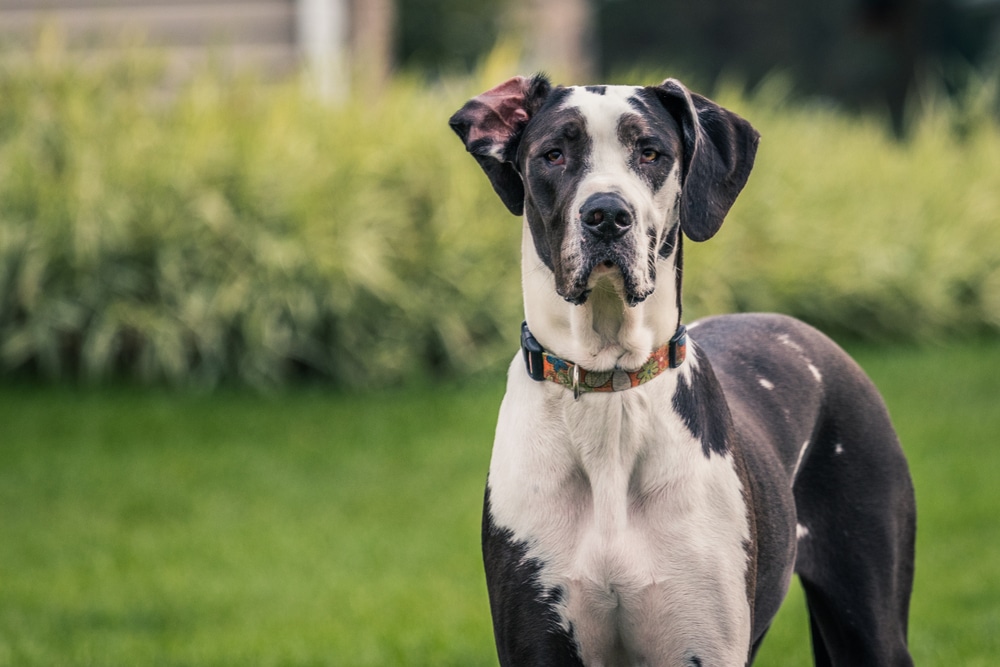
What is the average lifespan of a Great Dane?
For such huge dogs, the average Great Dane lifespan is estimated to be between 6 to 10 years, with some not even reaching 7 years old. Though, there are a few rare cases of Great Danes living until 12 years old.
While they might be considered one of the tallest dog breeds on earth, they also have one of the shortest lifespans.
Of course, some Great Danes can reach old age with proper care and maintenance. However, the fact still remains – the Great Dane lifespan is significantly shorter, especially if compared to other small and average-sized dog breeds.
Why is the Great Dane lifespan short?
The exact reasons are not yet known and scientists/ experts do not understand why exactly. However, they do know that small dog breeds age slower than large dog breeds.
The presumption in the animal kingdom is that, larger animals such as elephants or whales live a significantly longer life than smaller animals such as rodents or insects. However, this is not the case in dogs. So, why is the Great Dane lifespan so short?
One reason may be artificial selection. This is where a breeder breed only their largest Great Dane with one another for the purpose of creating even larger Great Danes.
Aside from the breed’s preexisting susceptibility to a number of health issues, artificial selection contributes to the breed’s tendency to develop growth-related diseases.
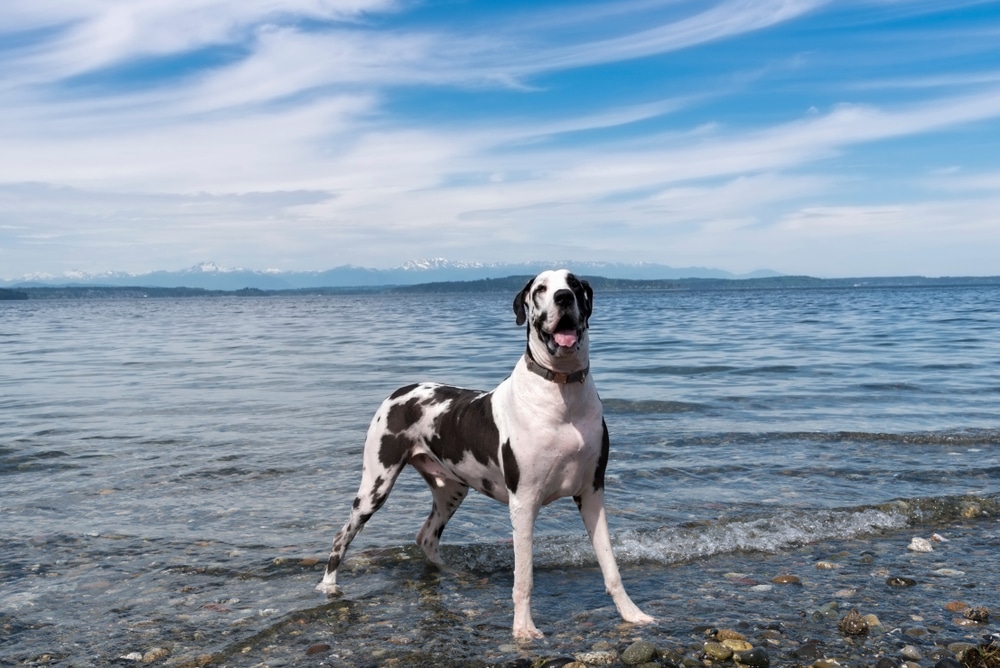
The health problems reducing a Great Dane’s life span
The Great Dane is among the large breed dogs that have a short lifespan. And the average Great Dane lifespan can be shortened further if the dog is suffering from diseases. So, it is always important to be aware of common health problems to plan and ensure a healthy life for your Great Danes.
Here are the most common health problems which can affect a Great Dane’s lifespan:
Bloat
The Great Dane is most likely to bloat. It is a condition where the stomach fills with gas and when left untreated, can result to the stomach twisting in itself.
Once a Great Dane gets bloat, the chances of the dog getting it again is high. Which could be dangerous for the Great Dane, as it might not be able to make it through the second or third time.
Great Danes with severe bloat require surgery to avoid the problem in the future. Veterinarians might suggest a gastropexy where they basically “tack” the stomach to the right side of the abdominal wall.
If you own Great Dane, knowing the early signs of bloat and consulting with a veterinarian is suggested in order to increase the Great Dane lifespan.
Dilated Cardiomyopathy
Dilated Cardiomyopathy is a heart disease where the muscles of the heart weakens, resulting to the enlargement of the heart. This is a common health problem among large dog breeds like the Great Dane.
When a Great Dane is diagnosed with Dilated Cardiomyopathy, the number of further abnormalities and complications arise. Congestive heart failure and arrhythmia (irregular heartbeat).
Dilated Cardiomyopathy, if not treated immediately, can affect Great Dane lifespan because it is fatal. It’s always best to seek immediate veterinary care once a Great Dane is diagnosed with this disease.
Hip Dysplasia
Hip Dysplasia is a paralyzing disease that influences the hip joints of the Great Dane. And this disease can largely affect the Great Dane lifespan. This is because it is more common in large breed dogs, is hereditary and can develop during puppyhood.
Great Danes who are suffering from Hip Dysplasia or other bone-related diseases experience extreme pain and lose flexibility in their joints. So their movements and activities are reduced because they can’t get up, climb stairs, jump, play or even walk easily.
Hypothyroidism
Hypothyroidism is a condition where the thyroid gland doesn’t function properly and is unable to produce enough “thyroxin” hormones.
The thyroid gland is responsible for regulating a Great Dane’s metabolic rate. And when a Great Dane is diagnosed with Hypothyroidism, its metabolism slows down. So, if you notice significant weight gain in your dog without any increase in its appetite, then it might be suffering from this disease.
When left untreated, Hypothyroidism can affect the Great Dane lifespan. This is because it can lead to other issues like obesity, joint problems and even heart diseases.
What can you do to improve your Great Dane’s lifespan?
Proper training, exercise, nutrition and regular veterinary visits are among the many things that can promote good health, and therefore increase the Great Dane lifespan.
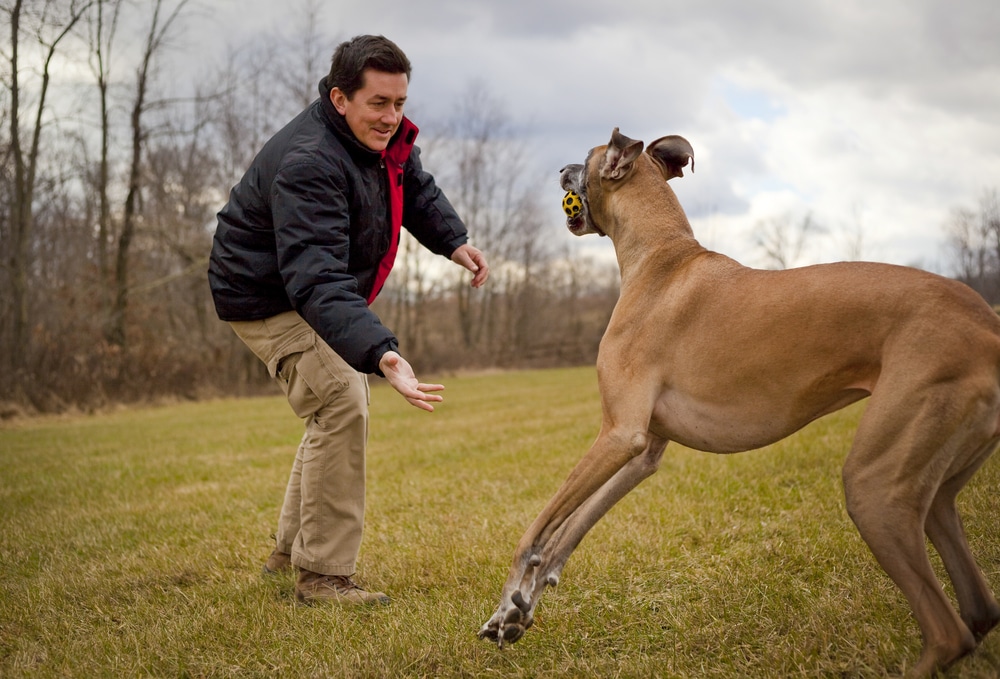
Great Danes are known as social dogs and get along well with people, especially children. They are also known to be very loyal companions and will protect their loved ones when needed.
So, as Great Dane owners, ensuring that your pet lives a healthy and happy life is a responsibility you have to take seriously. Furthermore, it’s the best way to improve the Great Dane lifespan.
Of course, their genetics are out of your control, but you can try your best to make sure they get to enjoy the best things life has to offer!
How can your Great Dane live a healthy life?
To ensure your Great Dane lives a healthy life, you need to give them a balanced diet and appropriate exercise, among other things.
A healthy life can, to some extent, ensure a longer Great Dane lifespan. Genetics aside, if your Great Dane get to live a healthy lifestyle, then that will help extend their lifespan.
Continue reading below for some important tips to ensure your Dane lives a healthy lifestyle!
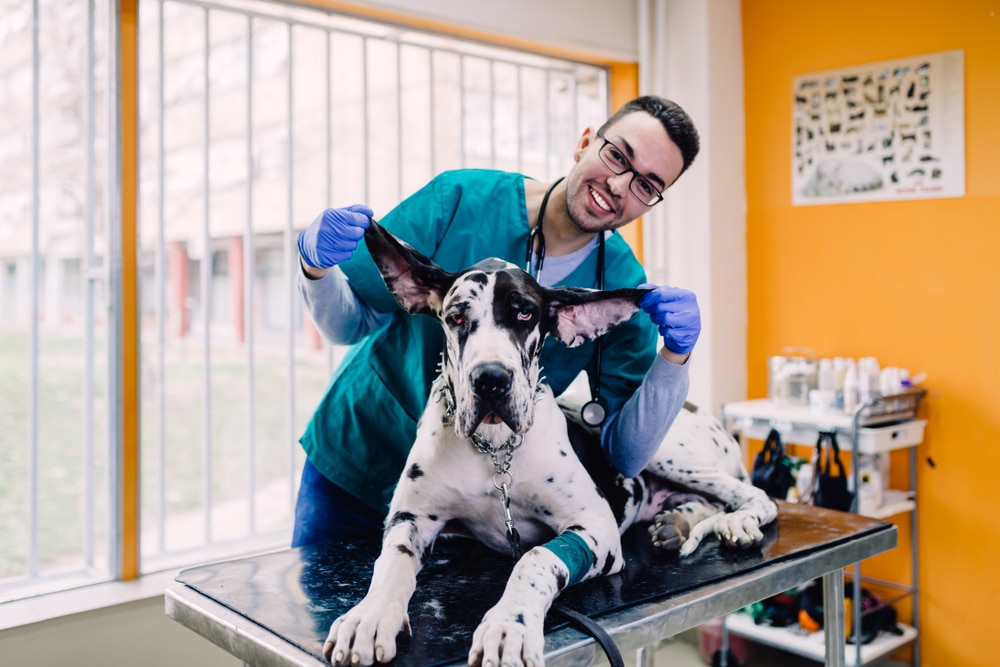
1. A balanced and healthy diet
Dogs, just like humans, depend on diet to maintain themselves. A Great Dane’s healthy life will largely depend on what you feed it with.
Remember that the food you feed your Great Dane must be appropriate for their breed – whether it’s raw diet, dry food, canned or homemade, you have to ensure that they are getting the proper nutrition from the food they eat.
How often you feed them is another important thing to remember. Since feeding them one or two large meal a day can cause issues such as obesity, dysplasia or bloat. Feeding them three times a day is ideal.
2. Appropriate exercise
According to a research, regular exercise doesn’t only prevent issues like obesity. It can also keep your Great Dane’s joints healthy and allow them to walk without problems even at an old age.
You have to keep in mind that this dog breed is susceptible to bone and joint problems. So, their regular exercises should include low-impact activities such as daily walks or play sessions like tug-of-war. You should avoid activities such as running or jumping where possible.
3. Regular visits at the vet clinic
The Great Dane is a breed that is prone to develop a number of diseases in its lifetime. And an effective way of increasing the Great Dane lifespan is regular vet visits. Why? Because you’ll be able to prevent or catch diseases earlier and this gives your dog better options for treatment and higher chances of recovery.
Furthermore, don’t hesitate to tell the vet about any change in your Great Dane’s activity, appetite and overall behavior. All of these might be early symptoms of a health problem.
So, make sure to visit the vet, get annual checkups and/or regular vaccinations to ensure your Great Dane is always healthy.
4. Responsible breeding
If you are buying from a breeder, you have to ensure that they are a reputable one. Responsible and reputable Great Dane breeders will have health certificates and will have the dog tested for any genetic disorders such as dysplasia or cardiomyopathy.
All of these will help you confirm if your dog is healthy or has any health conditions you should be prepared for. Remember, a Great Dane who has less history of genetic conditions is most likely to live longer.
However, if you decide to adopt instead of buy from a breeder, it’s most likely that you will not have access to the Great Dane’s health status and lineage. In this case, you can bring it to vet for a full screening and checkup.
Conclusion
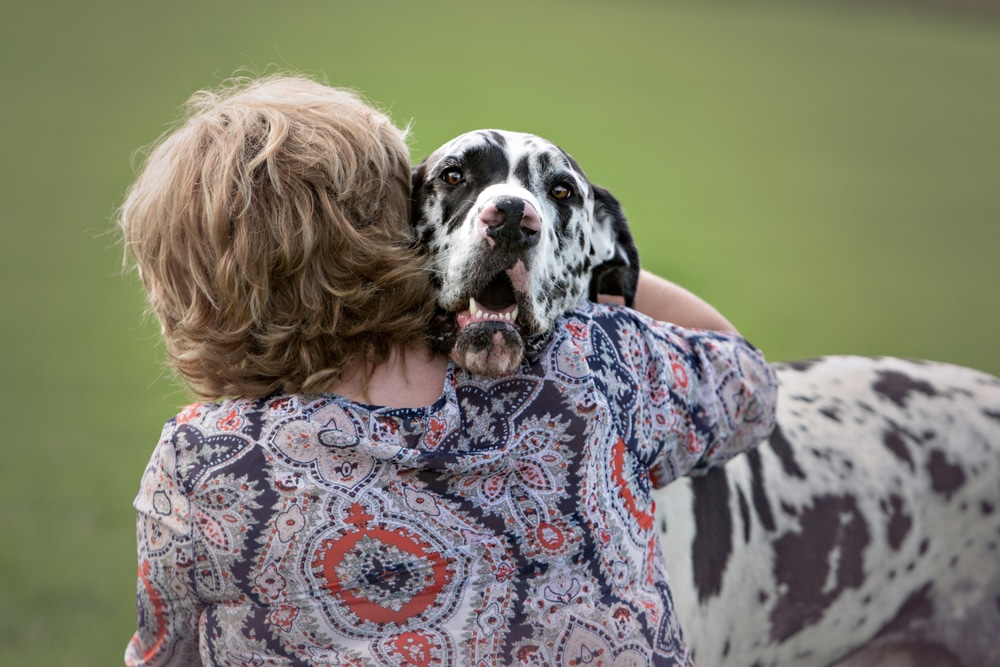
Even though Great Danes live a relatively shorter life, they deserve to live a great one. And as a future or current Great Dane parent, the least you could do is ensure they get to live their life to the fullest.
And although time spent with them is shorter than most dog breeds, you can expect a Great Dane to be a loving and loyal life companion its whole life.
Thanks forthe information.
The harlequin Great Dane you pictured in the article is my sweet boy Barlee. He has since passed away but we had this picture posted on shutterstock and it has not disappointed! We see him everywhere! Thank you to the talented Stephanie Prewett for the photo and RIP sweet Barlee of Washington, Oklahoma owned and forever loved and missed by Melissa and Chad Lee